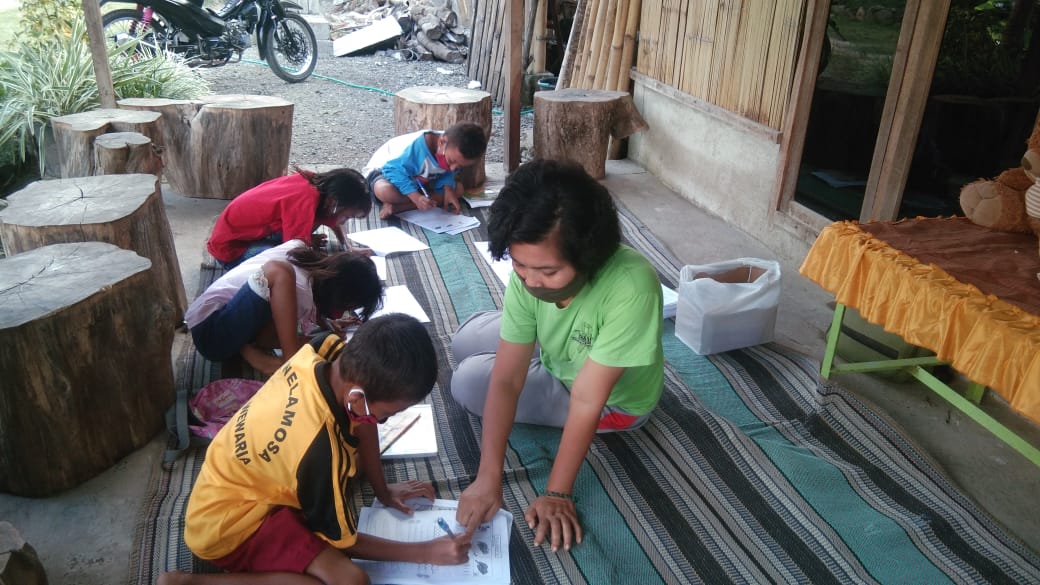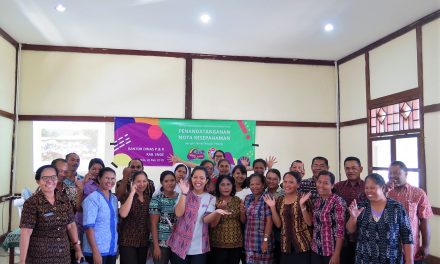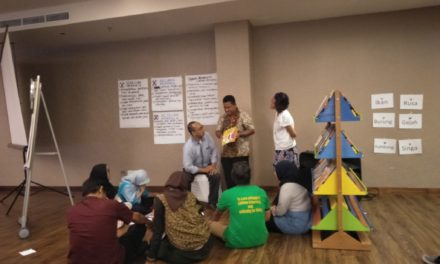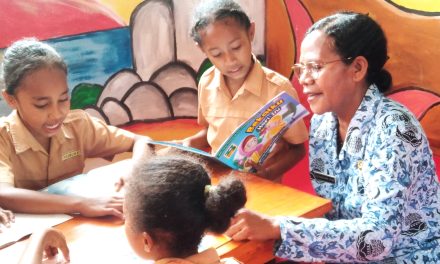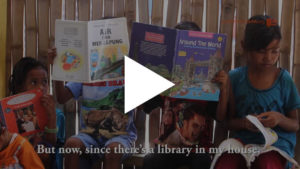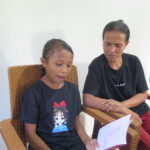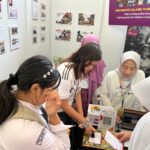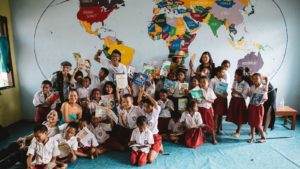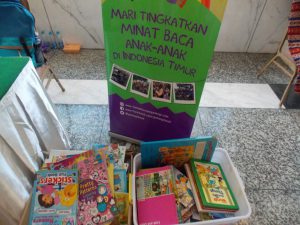In recent months, since March – June, face-to-face learning is no longer effective. Many teachers have the initiative to come to visit student homes to simply ask the news and convey the teaching materials that have been left behind.
In this new school year, learning from home (BDR) is still the first option in almost all schools in Indonesia. This activity is also the first option that is implemented by all schools of Rainbow Reading Gardens’ partners in eastern Indonesia.
In addition, some schools also bring new students to the school in order to complete the administration of the new student with the application of health protocols as recommended.
Some time ago, the Rainbow Reading Garden discussed with Kak Alain Verson, a CIS-Timor volunteer, a humanitarian institution that works in NTT. One of their programs is the strengthening of education environment and inclusive society.
Some of the key points we’ve done is that this pandemic season becomes a golden opportunity for teachers to be able to teach more inclusive. Teachers can start mapping their children based on their different skills and abilities.
Teachers are not always able to teach children on an inclusive basis when they are in the classroom. A lot of teachers are also admitted to not knowing the more effective method of teaching as an inclusive educator. This can be happened because in some areas of Indonesia, not all districts have an inclusive school, although it is set in the Permendiknas No. 70 year 2009.
“Every sub-district level must has one inclusive school for all education units.”
Implementation of Permendiknas that has been made eleven years ago is not even evenly and implemented in all sub-districts throughout Indonesia. The absence of guidance and mentoring from the Education Office related to making many teachers do not have enough provision to become an inclusive educator.
Here are some tips that teachers can do to be inclusive in distance learning and learning from home during the pandemic Covid-19:
- Get to know the abilities of each Children who are judged to have a quick ability to capture lessons do not need to be visited every day.
- Create a student learning. Student groups can be created based on students’ abilities and whose homes are adjacent. So, when teachers come to visit, it can save time and many students get the same material at the same time.
- Teachers can approach children who need more help more often without worrying about ignoring other
- Customize learning themes according to the abilities of each child
Hopefully this pandemic can be utilized by the teacher to be able to search for more inclusive distance learning methods. All teachers ultimately have the ability and the opportunity to be inclusive, right? Students will be the most benefited by this inclusive method.
Good luck.
![Taman Bacaan Pelangi [Rainbow Reading Gardens]](/wp-content/uploads/2016/07/logo_taman_bacaan_pelangi_rainbow_reading_gardens_bilingual_d.png)
